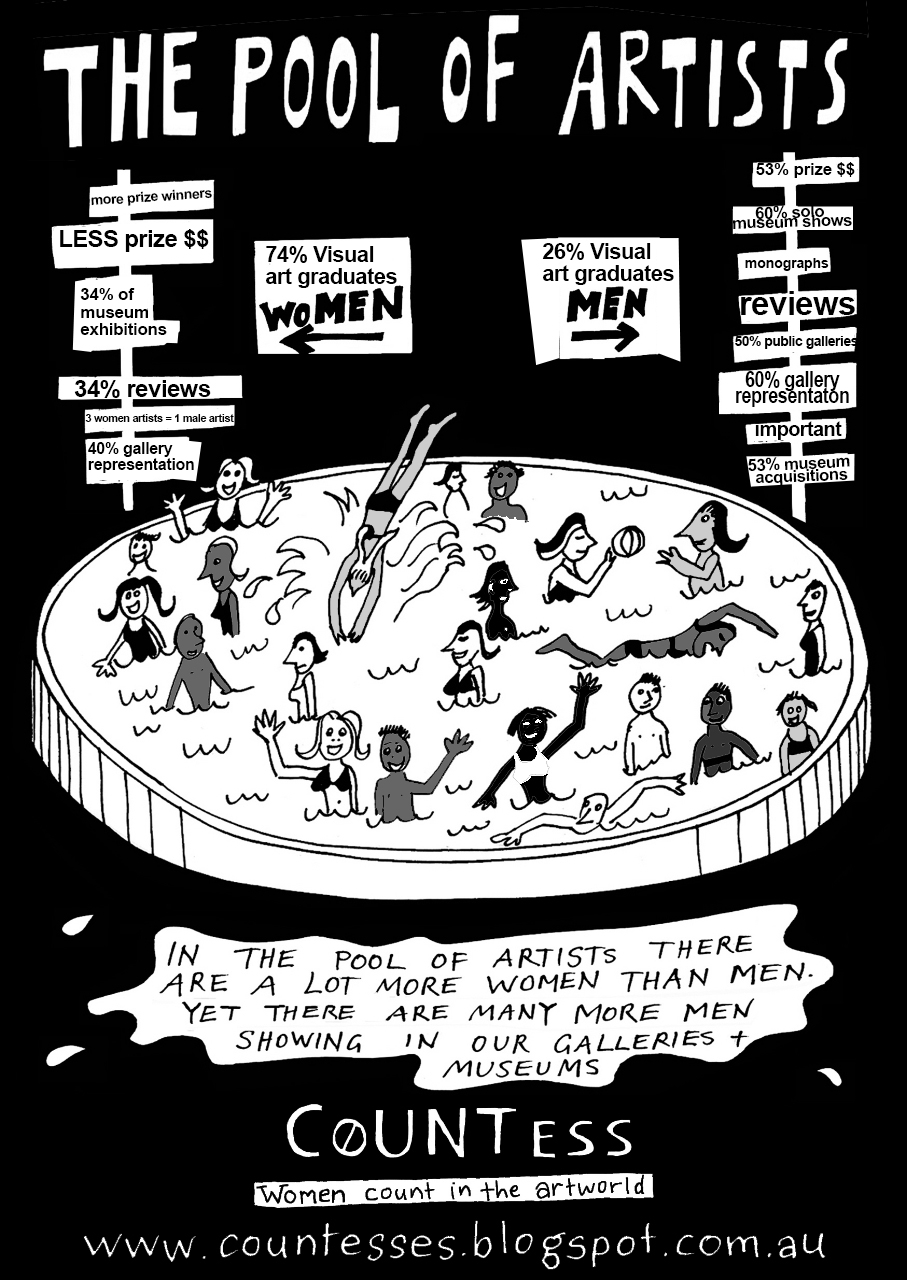
2022 Countess Report
Edited by Miranda Samuels and Shevaun Wright
Join Co-Editors Miranda Samuels and Shevaun Wright who will present the methodologies and findings of the 2022 Countess Report
︎︎︎ ACCA 6pm Thursday 2nd May 2024
︎︎︎ Griffith University Brisbane, 5pm Wednesday 8th May
︎︎︎Artspace Sydney 130pm Saturday 11th May 2024
︎︎︎ ACCA 6pm Thursday 2nd May 2024
︎︎︎ Griffith University Brisbane, 5pm Wednesday 8th May
︎︎︎Artspace Sydney 130pm Saturday 11th May 2024
The 2022 Countess Report is here, our third comprehensive report on gender representation in the Australian art sector. Co-edited by Miranda Samuels and Shevaun Wright, the report continues Countess’s long standing inquiry into the structures and frameworks that govern artistic production and legitimation in the Australian contemporary art world, and has been expanded to include analysis of First Nations representation.
The report analyses gallery and museum exhibition data as well as data on artist education, prizes, funding, organisational governance, collection acquisitions, and commercial gallery representation from across Australia in the calendar year of 2022.
Data on approximately 22,000 artists across more than 450 galleries and arts institutions was manually counted and verified, while data on acquisitions and exhibitions was provided directly by state and territory galleries, allowing for closer scrutiny of asymmetry in acquisition methods, including the Cultural Gift Program. We looked at institutions of all sizes and budgets: artist run initiatives, contemporary art spaces, commercial galleries, public galleries, Aboriginal-owned art centres, university art museums, major museums, and state galleries.
The report aims to not only hold arts institutions accountable to their representational claims and ongoing diversity strategies, but to contribute to and, at times, challenge existing research and reportage around value and artistic success, especially where the impact of gender, race, and class dynamics is obscured or downplayed. Our adoption of the corporate and bureaucratic language of a museum annual report is in service of counteracting and interfering with cultural narratives premised on capitalist and colonial wisdom, and our use of quantitative data is similarly strategic.
Findings from our previous two reports, which analyzed data from 2014 and 2018 respectively, have been widely cited and circulated, and while we welcome the broad use of our research, we also understand that findings in the form of aggregated data run the risk of oversimplifying complex historical, political, and economic dynamics affecting artists today. A focus only on representation can also conceal issues of exploitation, gaps in earnings, and tokenism.
We have designed this report with these contradictions in mind, and have sought to incorporate them into our methodology by: weaving findings from relevant existing research projects into our analysis, and including qualitiative to include interviews with artists.
The 2022 Report has drawn on the expertise of numerous advisors, consultants, and interviewees from across the sector, as well as from the broader Countess.Report team.
We thank and acknowledge the SHEILA
Foundation who have been a longterm
supporter of The Countess Report. Their
financial support, advocacy and
enthusiasm in championing our work has
allowed Countess to continue.
We thank the National Association for the
Visual Arts (NAVA) for their in-kind media
support and ongoing advocacy for The
Countess Report, since 2016.
The 2022 Countess Report project has
been assisted by the Australian Government
through Creative Australia, its principal arts
investment and advisory body.
This project has also been financially assisted
by the Copyright Agency Cultural Fund.
Join our mailing list for announcements ︎︎︎
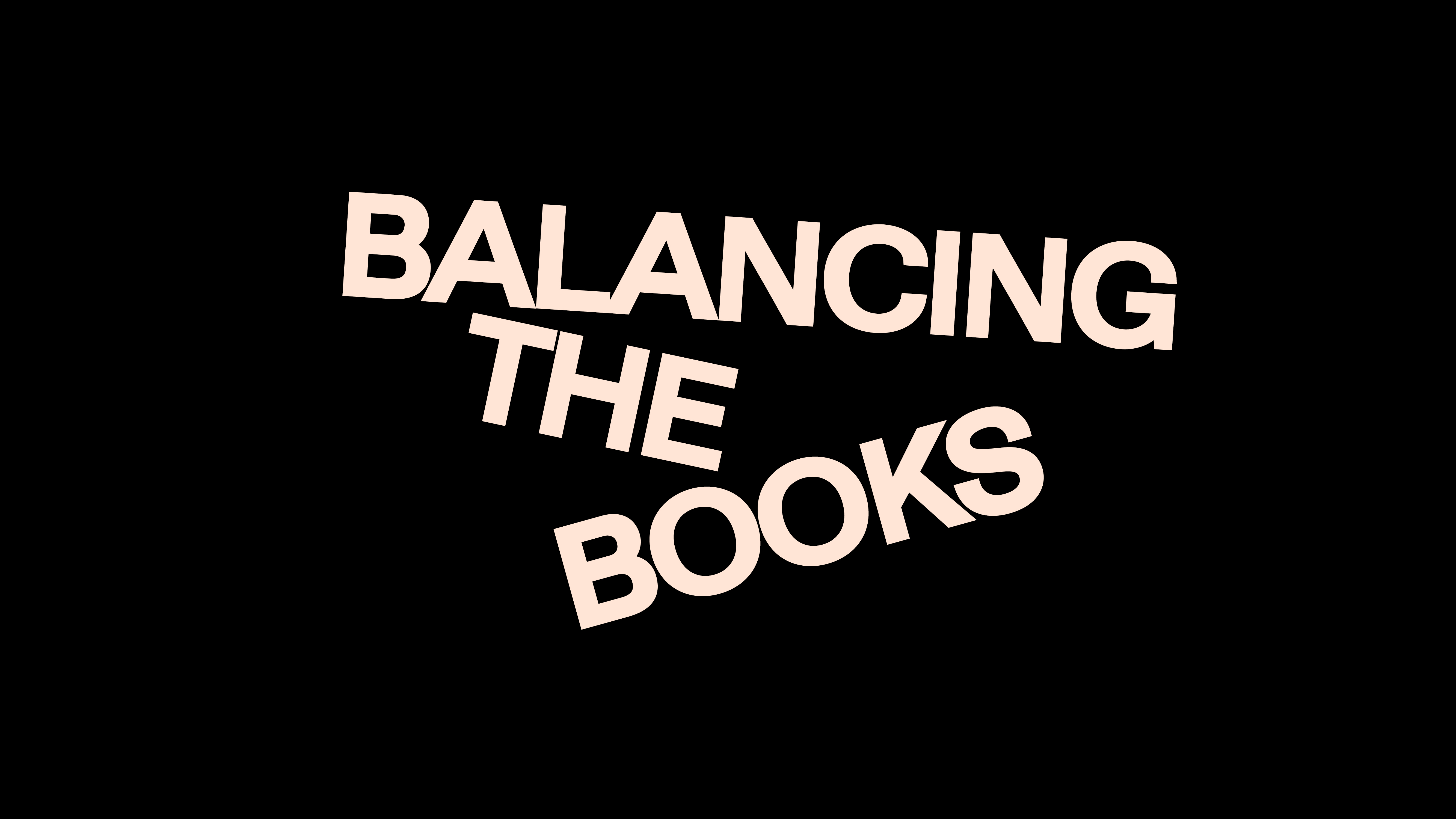

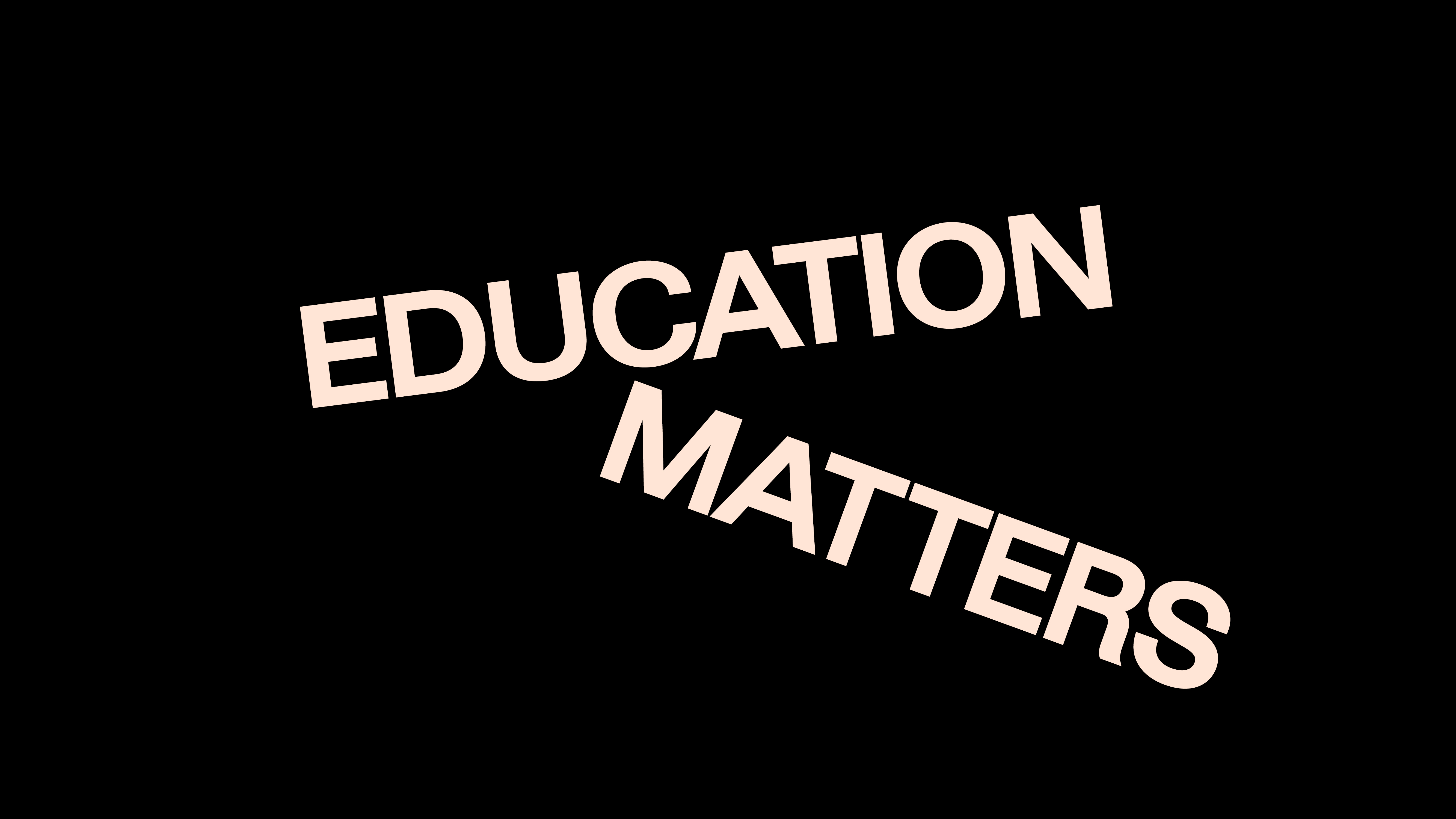
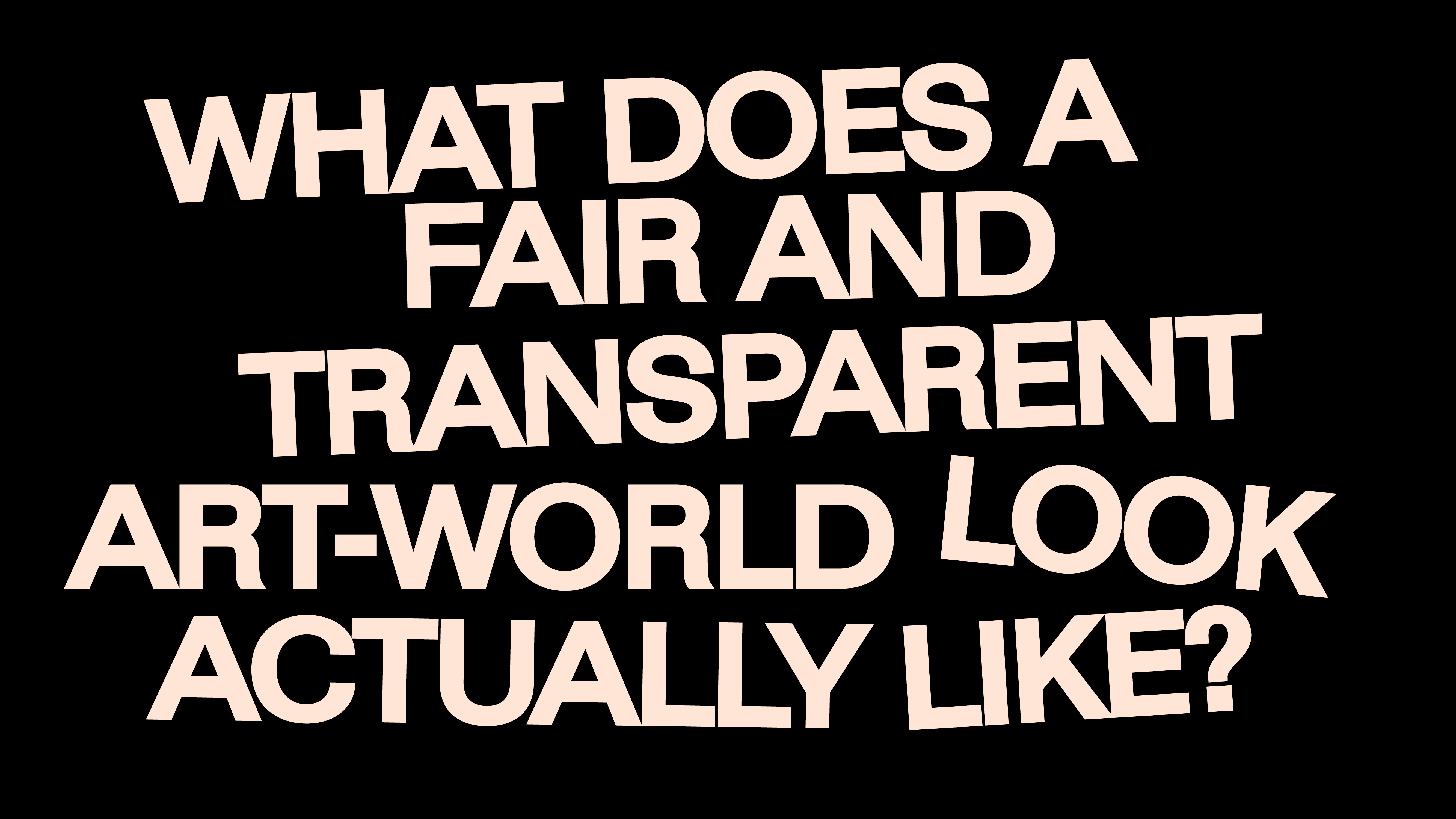
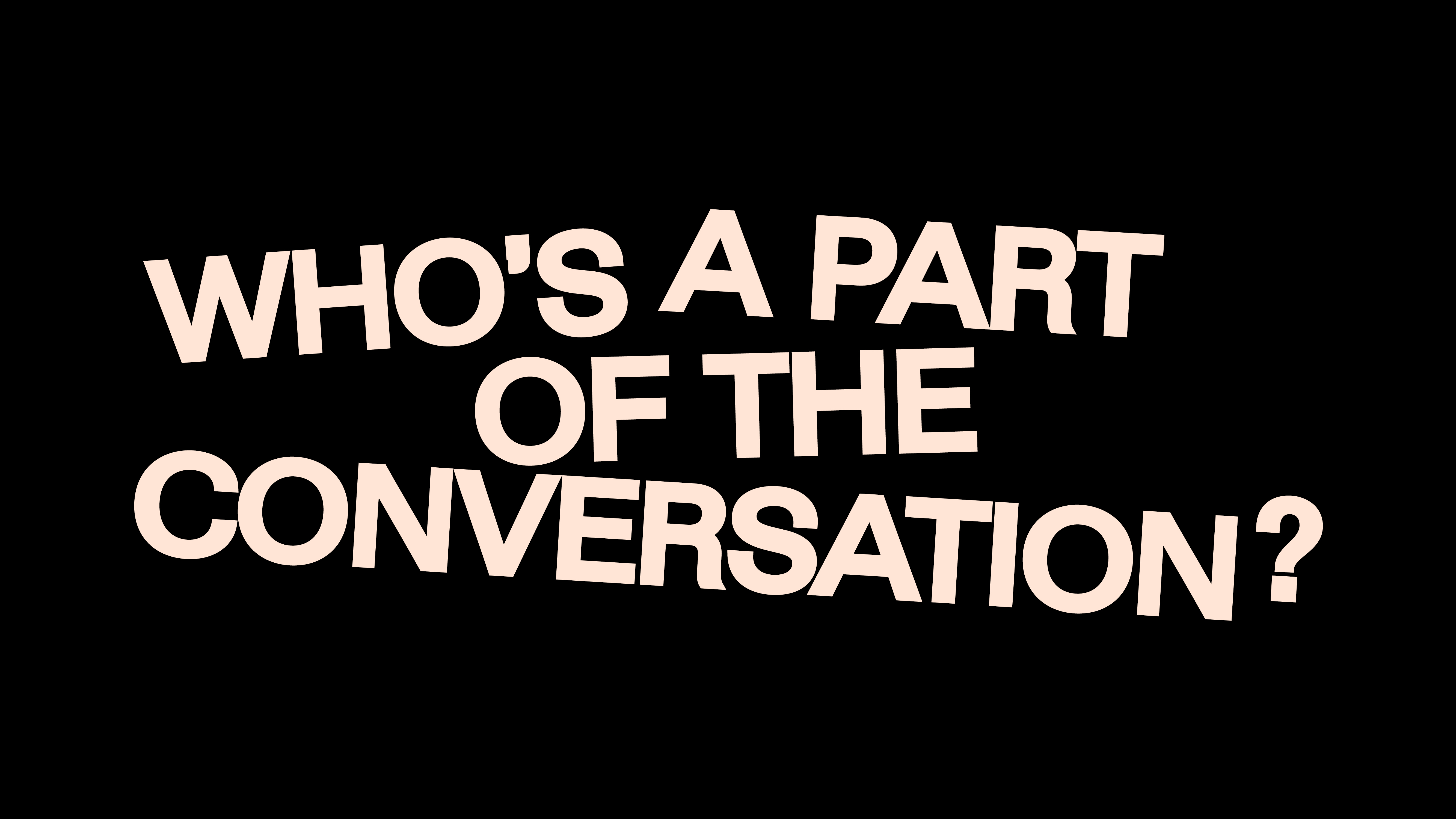
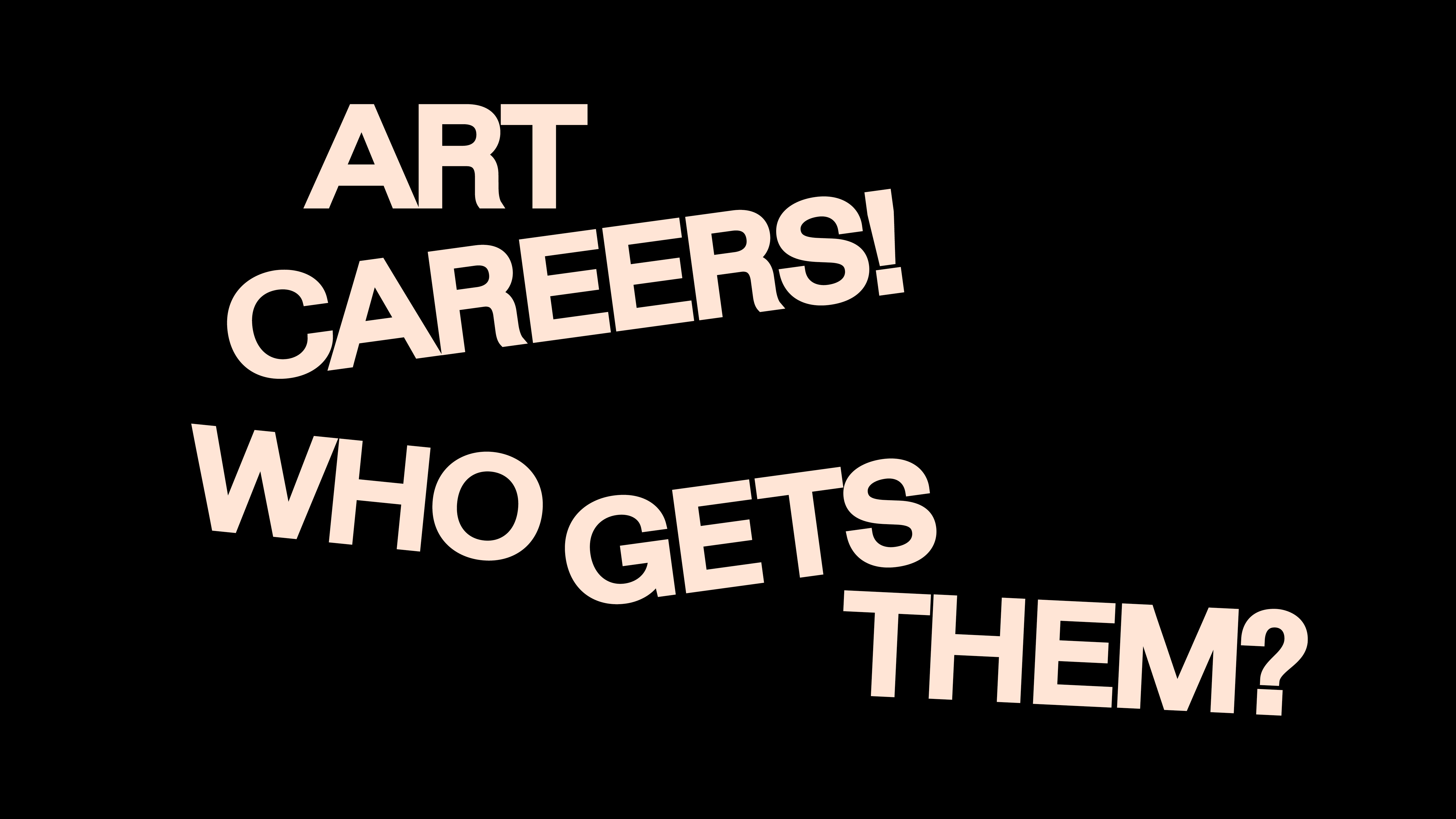
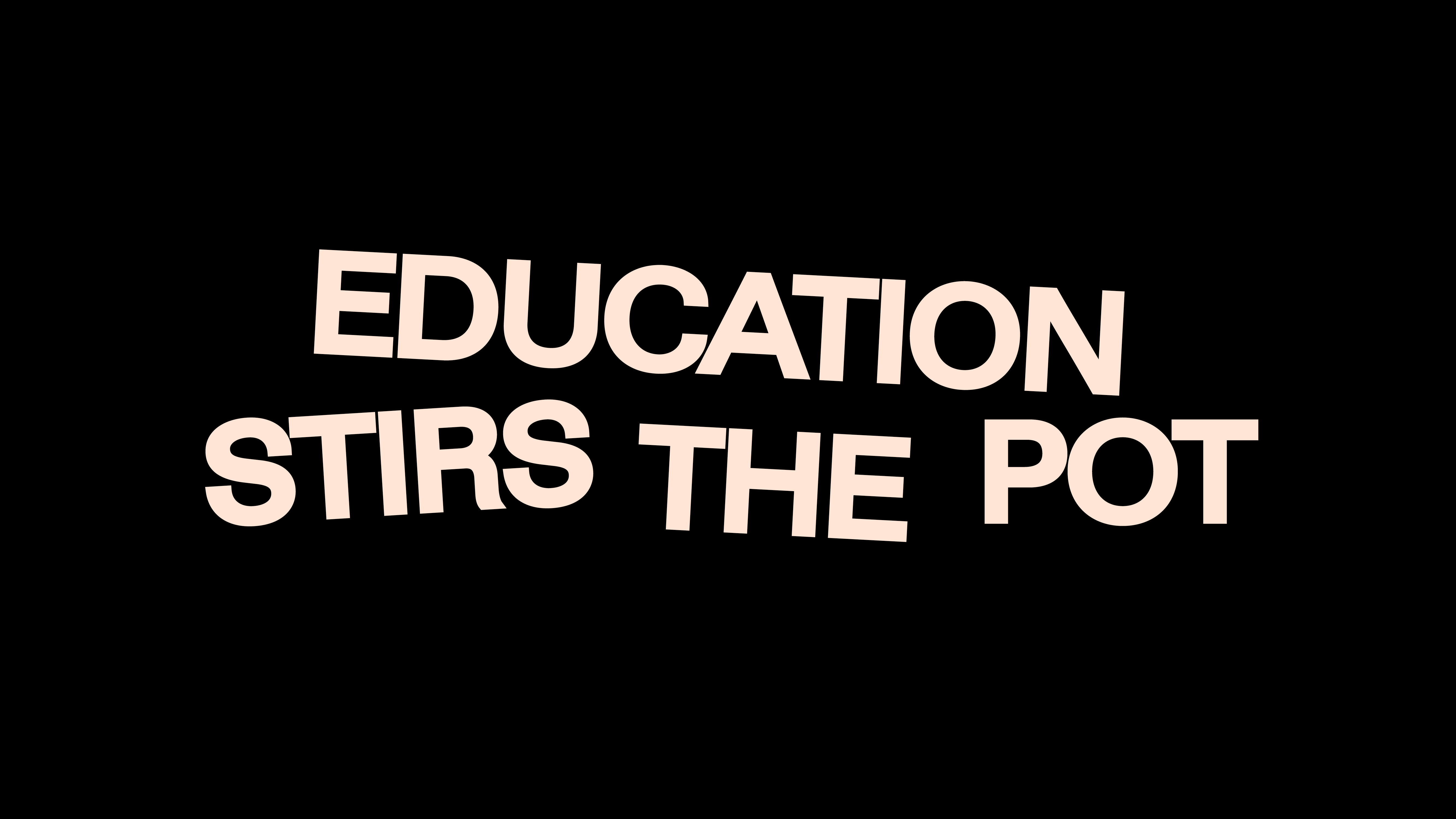
2019 Countess Report
Edited by Amy Prcevich
In 2016, the first Countess Report revealed in detail that an imbalance of power existed in the Australian art world. Men held more positions at senior levels, and despite 75% of art school graduates being female, were significantly better represented across the sector.
Skip forward to 2019, and our updated report chronicles key changes in the sector between 2014 and 2018.
Following wide community uptake of the 2016 report, the Countess spent two years engaging with the arts community through workshops and round-table discussions. During this period, we set out to better understand what and where gender conversations should be focussed, both now and in the future. Key issues and reported points of contention have informed our methodology and the writing of this report, notably in the inclusion of a Non-Binary gender category informed by Clear Expectations ︎︎︎READ HERE. While have attempted to respond to the community’s concerns as best we could with the resources available, we acknowledge there is important work to be done in better understanding the data within the broader context of race and class issues.
It is worth highlighting that since the 2019 report was released, discussions about gender representation in various sectors of the arts have worked their way into the mainstream. We believe this has renewed institutional interest in dealing with issues of gender inequity.
Countess will continue to keep watch in the coming years to ensure this is not a passing trend.
2019 AT A GLANCE
The representation of women has significantly improved.
We counted over 13,000 artists across 184 institutions. This is undeniably a healthy sample size.
The category of non-binary artist was included for the first time. We now have a benchmark for non-binary representation within the sector.
We can report that:
︎︎︎71% of art school graduates are women.
︎︎︎There was an increase in the representation of women artists of between 10-20% across artist run spaces, commercial galleries,
contemporary art organisations, public galleries, major museums and university galleries.
︎︎︎State galleries and museums continue to significantly under-represent women in their collections and exhibitions.
︎︎︎In State galleries and museums the representation of women decreased from 36.9% to 33.9% from 2016 to 2019.
︎︎︎Non-binary artists were represented at 1-2% across the sector, with no non-binary artists recorded in curated state gallery exhibitions in 2018.
︎︎︎52% of art prize winners were women, with the top ten prizes (in dollar value) being a 50/50 split.
Access the full text here︎︎︎PDF
2016 Countess Report
Edited by Elvis Richardson
This study has found that in 2014, female artists may be claiming new ground, and certainly that the number of women showing in Australian galleries is rising, but that the pool of male art graduates still have between three and four times the number of exhibition opportunities as the pool of female graduates.
The study established that women make up 74% of visual art graduates and 48% of exhibiting artists in ARI’s - the most gender equal of the gallery types. Both categories – art schools and ARIs – are open call.
A surprising and pleasing result was that the percentage of female artists showing in CAOs galleries rose from previous levels that were consistently below 40% to 45% in 2014. Art Prizes also took a turn for the better, awarding 56% of the prizes to women, though only 47% of the prize pool by value.
When we looked at prize data historically, the 2014 result indicated a recent and significant improvement, perhaps because women won three of the richest art prizes in 2016.
The analysed biennales and public galleries also achieved percentage representation of women in the mid to high 40s.
Access the full text here︎︎︎PDF

